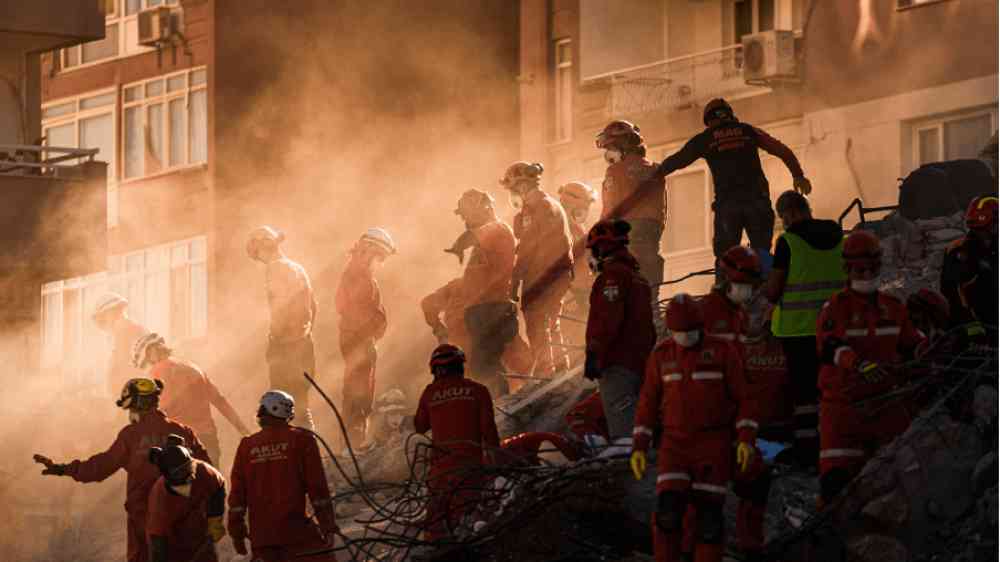Nearly half the global population feels unable to protect themselves from disasters

- More than four in 10 people (43%) in the world say they can do nothing to protect themselves in a disaster situation;
- Over a third of countries in the World Risk Poll Resilience Index (42 out of 120) see significant decreases in individual resilience since 2021;
- Nearly a third of people (30%) across the world who experienced a disaster in the past five years did not receive a single warning.
Weakening individual resilience tied to reduced agency
A new report by a global safety charity has revealed that individual resilience across the world dropped between 2021 and 2023, increasing people’s vulnerability in the face of climate-related disasters and other shocks.
The findings come from the latest edition of the World Risk Poll Resilience Index, produced by Lloyd’s Register Foundation using data gathered by Gallup as part of the Lloyd’s Register Foundation World Risk Poll. The results are detailed in a new report: ‘Resilience in a Changing World.’ This is the third edition of the Poll and comprises data from 147,000 people in 142 countries on how they experience and perceive risk.
According to the data – collected in 2023 – 43% of the world’s population say they can do nothing to protect themselves and their families in the event of a disaster, a seven percentage point increase from 2021. This decline in people’s sense of agency is the main factor behind the reduction in individual resilience scores seen in over a third of countries included in the Index in both 2021 and 2023 (42 of 120). This stands out from relatively stable global scores at the other three levels of resilience measured by the Index – household, community, and societal.
Everyone should have a future where they are not threatened by disasters. It is clear that we are heading in the wrong direction: risk is rapidly rising with increased shocks and stresses that are deepening inequality and derailing progress on the Sustainable Development Goals. This report is an important milestone for understanding risk that can help set a path to a more risk-informed, sustainable future.
- Jenty Kirsh-Wood, Head of Global Risk Analysis and Reporting at the United Nations Office for Disaster Risk Reduction (UNDRR)
Despite falling individual resilience at a global level, the report also found that people in countries with high rates of household disaster planning are more likely to say there is something they can do to protect themselves in a disaster, a knock-on effect which may lead to exponentially better outcomes.
Although overall resilience remains stable at a global level, we are seeing significant decreases in individual resilience in many countries, suggesting a loss of agency in the face of disasters across the world.
We can see from the Resilience Index that resilience at the individual and household levels are often connected, so falls in individual resilience should be a signal to policymakers to intervene before they translate into more widespread falls in overall resilience. However, this connection also suggests an opportunity for more governments to improve individual resilience by prioritising and supporting household disaster planning.
- Nancy Hey, Director of Evidence and Insight at Lloyd’s Register Foundation
Another crucial aspect of disaster resilience is the effectiveness of early warning systems, and in March 2022 UN Secretary-General António Guterres announced a target to ensure every person on Earth is protected by such systems within the next five years. However, the new World Risk Poll report found that nearly a third of people (30%) who experienced a disaster in the past five years received no warning at all. The figures also highlight concerning geographic and socio-economic inequalities in access to these life-saving warnings.
In Northern Africa, only a quarter of people (25%) received advanced warning, the lowest figure for any global region, followed by Central/Western Africa, where 38% were warned. In contrast, 90% of people who experienced a disaster in Eastern Asia were warned. The data highlights further inequalities based on education level – for example, those with tertiary education were significantly more likely to receive at least one warning (78%) compared to those with primary education only (66%).
The impact of financial status is even more stark – only 63% of the poorest respondents (those who told the Poll they could cover their basic needs for less than a week if they were to lose their income) received a warning, compared with 74% of these who could survive for a month or more. However, the fact that over three-quarters (77%) of all those who were not warned own a mobile phone offers a clear opportunity to improve the situation.
Efficient public warning systems save lives. Advance warnings not only allow for swifter evacuations, but they’re also a crucial part of building trust in governments and helping households and individuals feel better prepared in the face of disaster.
Programmes to promote their implementation, such as the UN’s Early Warnings for All initiative, are improving outcomes in lower income countries, but there is still much to be done to reduce inequalities. Multi-channel warning systems from trusted, credible sources need to be implemented across the board, and regularly tested to ensure their capability, as well as to help people prepare better, no matter their place of residence or education level.
- Dr George Karagiannis, Risk and Resilience Programme Director at Resilience Rising